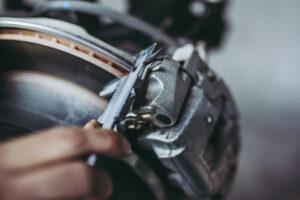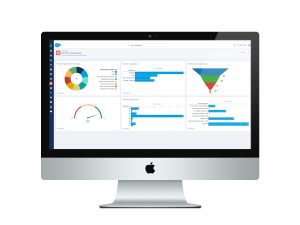Maintenance. A word that does not inspire many people. It implies either an undesirable task or an unwanted cost. But, is maintenance really a bad thing? In this post, we’ll discuss some Asset Maintenance Management philosophies and how they can positively impact your everyday life.
Types of Asset Maintenance
Asset Maintenance is broken down into the following types:
- Emergency Maintenance
- Preventative Maintenance
- Predictive Maintenance
Emergency Maintenance
This is the worst-case and the most-used type of maintenance. Often referred to as “break-fix,” because the issue does not arise unless something is broken. If you are driving a car, this would be like getting a flat tire or having the radiator explode on you. The car is no longer driveable, and you will need to fix the issue before you can continue with your daily schedule.
These events are extremely costly. They cannot be planned for or budgeted. The cost is not just a monetary cost, but it is also a time cost. You will lose hours and maybe even days while trying to repair the failure that caused the breakdown.
Examples of these types of events would be a broken bone or a sudden loss of consciousness. You had no idea that this would happen, but you are off to seek medical attention once it did. Time spent being diagnosed and recuperating from the injury are costly in terms of time and money and endure a lot of physical anger (towards oneself and others). In frustration, the road to being back at 100% efficiency is not a “quick fix.”
Preventative Maintenance
Periodic events that are designed to be check-ups. Preventative Maintenance is done to see how you are doing and catch anything before becoming an Emergency Issue. The idea behind this is to address the issues at a convenient time. Any additional downtime is factored in or scheduled. This won’t cause significant disruptions to your schedule. Going back to the car metaphor, getting an oil change every 3,000 miles.
For an individual, Preventative Maintenance is going in for a physical once a year. Visiting your dentist twice a year for cleaning is also a form of preventative maintenance. Doctors establish what your personal baseline is and can identify issues early on.
By performing preventative maintenance, you ensure that you are getting the most performance out of the expected lifespan. If a car is to last five years, preventative maintenance is design to help your car reach or exceed five years of service.
Predictive Maintenance
Replacing an item or fixing a system just before the point of failure is predictive maintenance. You maximize the lifespan of the part and minimize your cost and disruption. This is because you catch the issue and replace the part before it fails. Going back to the car metaphor, this measures tire tread and the thickness of brake pads. When the material has worn down to a very thin level, it’s time to replace it. It hasn’t failed yet, but it will soon. You can replace it now or tomorrow. The longer you wait, you’ll run a higher risk that the failure will happen. Now you’ve got some emergency maintenance to attend to.
Predictive Maintenance would be like getting a haircut because your hair is getting unmanageable to transcend to an individual. Other examples would be replacing shoes and clothing because they are fading or holes are starting to form. For shoes, the tread on the soles may be nearing a point where they no longer exist. Either way, they are nearing a point where their usefulness is no longer there.
Applying Asset Maintenance Principles to your Life
You can’t stockpile time. Similar to manufacturing, downtime is the enemy.

Don’t put off Predictive Maintenance
Predictive maintenance is the most cost-effective—emergency maintenance results in the most amount of downtime. You can put off predictive maintenance for a short duration if the need is there. Delays are due to your schedule or ability to pay for the fix. The best way to think about this would be like a race car driver coming in for a quick pit-stop. You’d rather be racing, but the alternative would be risking a chance of wrecking your car and losing any chance of finishing the race.
Preventative Maintenance is important
Even though it’s the least efficient form of maintenance, preventative maintenance is important. Going in for annual physicals are key to your well-being. Periodic check-ups establish baselines. When a doctor knows what “your normal” is, they can easily spot when something is not right. This will lead to predictive maintenance and catching problems before they are emergencies. Like with taking a car in for a tune-up, check-ups ensure that you are running as efficiently as you can.
Athletes for major sports teams need to pass a physical exam before a contract becomes valid. In the USA, annual physicals are becoming the norm for everyone because of this idea.
 Your Preventative Asset Maintenance isn’t solely physical
Your Preventative Asset Maintenance isn’t solely physical
To achieve proper maintenance, you must address all aspects. The physical operation of your self is just one aspect. The emotional and spiritual needs also require attention. Make sure to take the time to address these needs regularly. Examples of these can be going to religious services for spiritual maintenance. Doing yoga or meditation. Seeing a psychologist can help with emotional maintenance. Sometimes, one activity can satisfy all three, like taking a walk on the beach. Just make sure that you don’t ignore any one of three.
Find ways to make all your Personal Asset Maintenance Predictive
Predictive Maintenance is the most cost-effective. The optimal strategy is to make all maintenance predictive. If a shirt has a hole in it, it’s time to mend or replace it. If a car is constantly needing care, it’s time to replace it. But how do you convert preventative or emergency maintenance to predictive?
 Devise ways to Monitor and Actively Measure
Devise ways to Monitor and Actively Measure
Newer cars have more sensors in place. This is to warn you if tire pressure is low, the oil needs to be changed, and how many miles you have left until you are out of gas. All of these are ways that make preventative and emergency maintenance predictive. The second one of these items are close to failure, a warning will appear on the dashboard. The warning lights coming on is a signal to schedule maintenance work.
So, how do we enable similar functions in everyday life? For home appliances, you can seek out energy-efficient appliances that also have monitoring software included. Examples of this are the fire detectors that beep when the batteries are getting low. Refrigerators that informs you when a water filter needs to be changed. Smart apps and appliances that constantly monitor your systems and inform you when action needs to be taken. Even wearable tech like a FitBit falls into this category. These are good and ideas. However, cost-effectiveness comes when you listen when to the alarms when raised.
In a world that is so data-driven, there are tools available to help you quantify and analyze what you are doing. Food and activity journals can help you assess your performance and health. Also, several tools that can measure oxygen levels in your blood, blood pressure, heart rate, etc., can help you predict if you are on track for peak performance or nearing a possible breakdown. There are also mindfulness tools available to help you achieve and measure the other non-physical aspects of personal performance. Utilizing these tools is extremely beneficial. Your ability to track and monitor will increase your ability to make educated decisions on what to do next.
Know When to Mend and When to Replace
There is a constant struggle on when to mend and when to replace. Depending on the item, the percentage of the cost weighs heavily upon the decision. In other cases, the debate is not worth investigating.
Consumer Reports like to push the 50% Rule when evaluating repair vs. replace. This rule states that if the repair costs less than half (50%) of the new replacement cost, then repair it. Breakdowns over time and maintenance costs are included in this study. An example of this would be like your TV has broken down. It’ll cost $75 to fix your TV. However, with the current TV Sales, a new unit would cost you $150. It’d be cost-effective to replace the TV than to pay to fix it.
The 50% rule does not always apply. If a shirt costs you $10 and the cost to fix a hole in it is $3, you may just opt to get a new shirt. This is because the cost to replace with new is negligible to the cost of the repair. Conversely, you may be willing to pay $1600 to fix a car that could be replaced with a newer model for $3000. Opportunity cost also factors into this decision. It typically takes 3 or more hours to buy a new car at a dealership. Those 3 hours are worth more than the $1400. Which is more productive, 5-10 minutes of shopping to buy a new shirt or 30 minutes to manually mend the hole? The key is to be aware of when it is time to replace something or to fix it.

Conclusion: Personal Asset Maintenance and You
Your self and your personal well-being is your most prized asset. There’s a saying that “Your Health is your Wealth.” Apply these tips and strategies to gain more control of your life. These strategies will help you effectively manage your time and money. From there, you can start to focus on other keys to success or personal development strategies.
At Perficient, we continually look for ways to champion and challenge our talented workforce with interesting projects for high-profile clients, encourage personal and professional growth through training and mentoring, and celebrate our people-oriented culture and the innovative ways they serve Perficient and the community.
Learn more about what it’s like to work at Perficient at our Careers page.
Go inside Life at Perficient and connect with us on LinkedIn, YouTube, Twitter, and Instagram.



What an invaluable resource for businesses looking to make a positive impact! The “19 Ways to Foster a More Sustainable Business” article is a treasure trove of practical and actionable ideas. It’s heartening to see a comprehensive guide that not only outlines the benefits of sustainability but also provides concrete steps to achieve it. This compilation serves as a roadmap for companies to integrate eco-friendly practices, reduce their environmental footprint, and contribute to a healthier planet. Kudos to the creators of this guide for empowering businesses to take meaningful strides towards a more sustainable and responsible future!